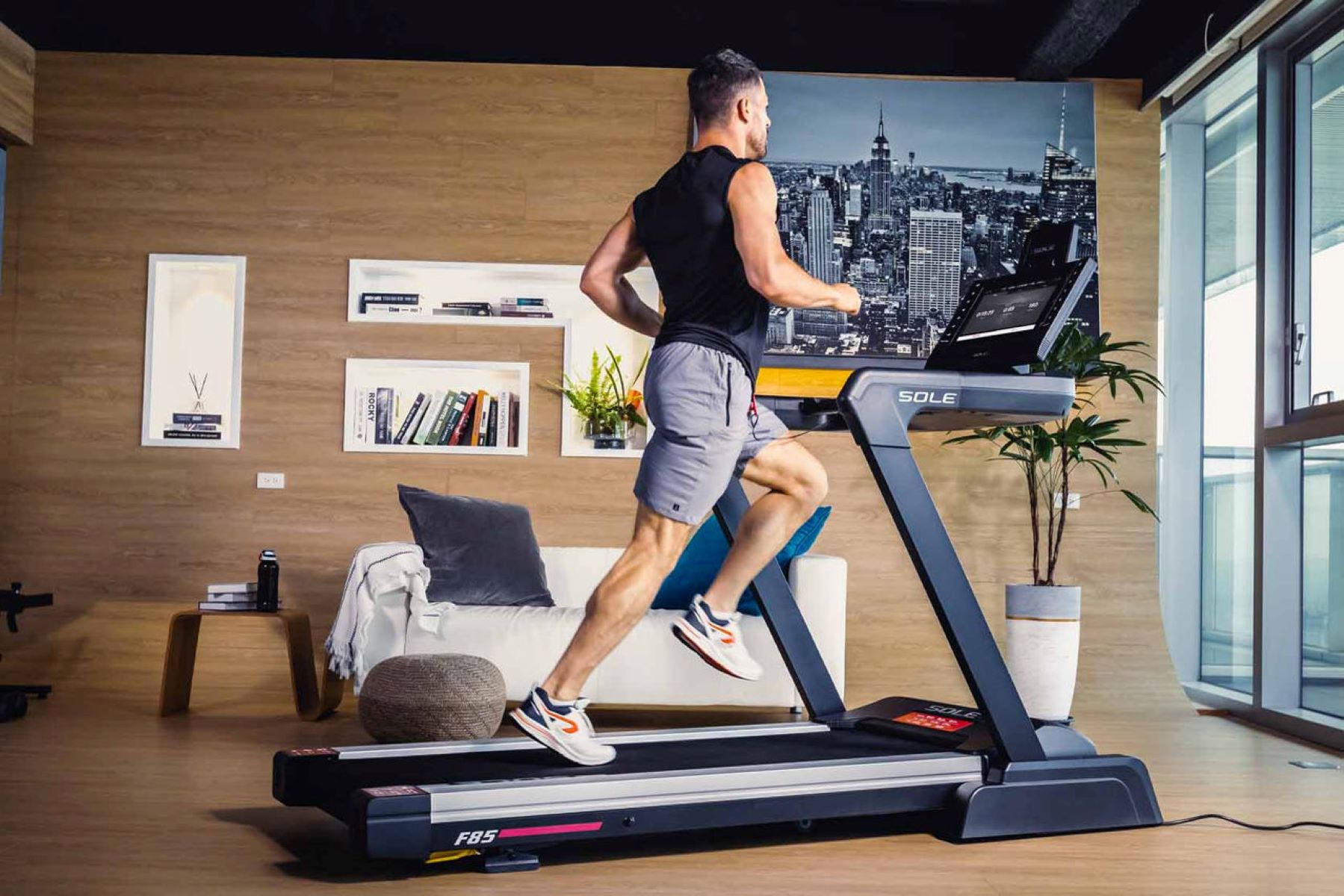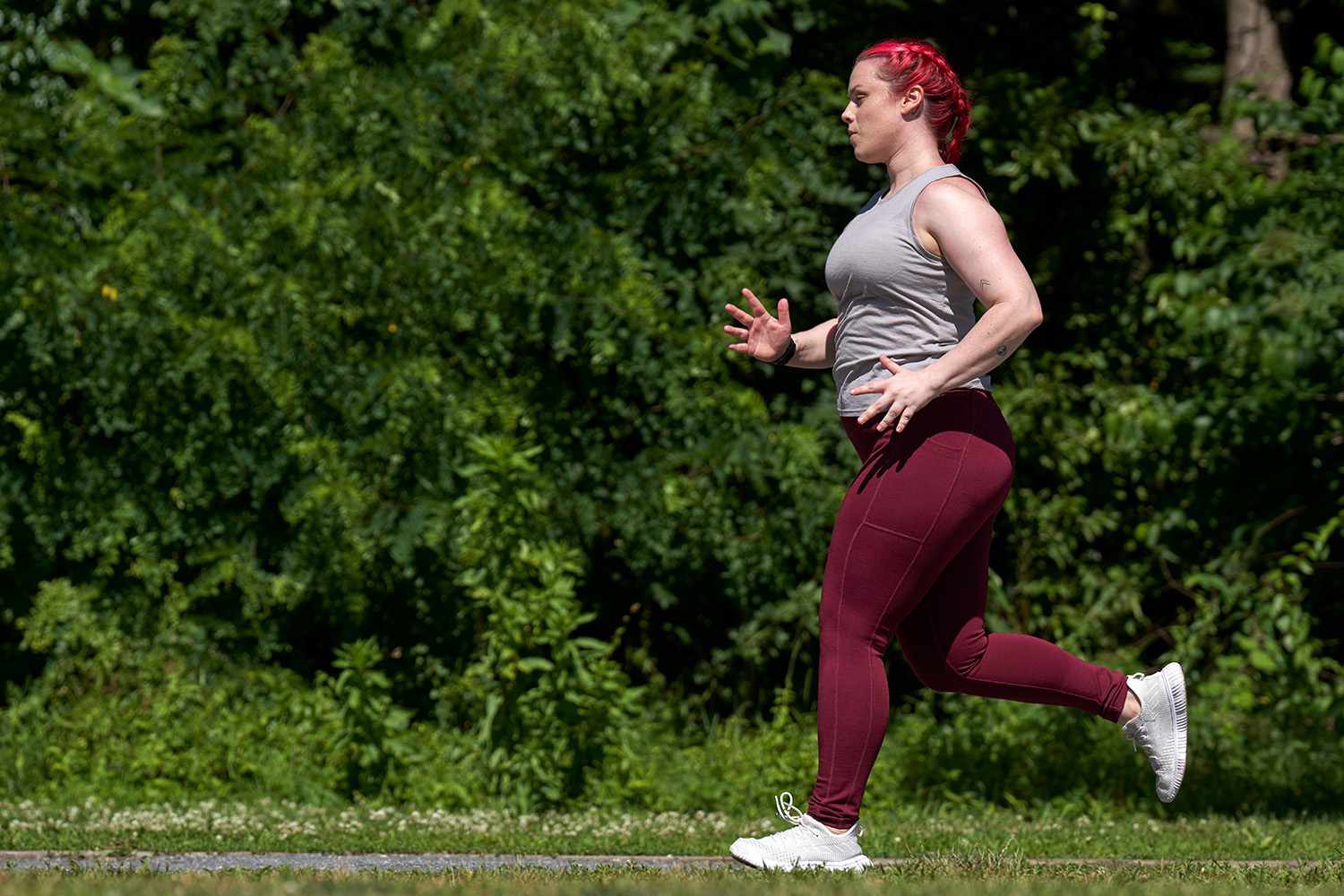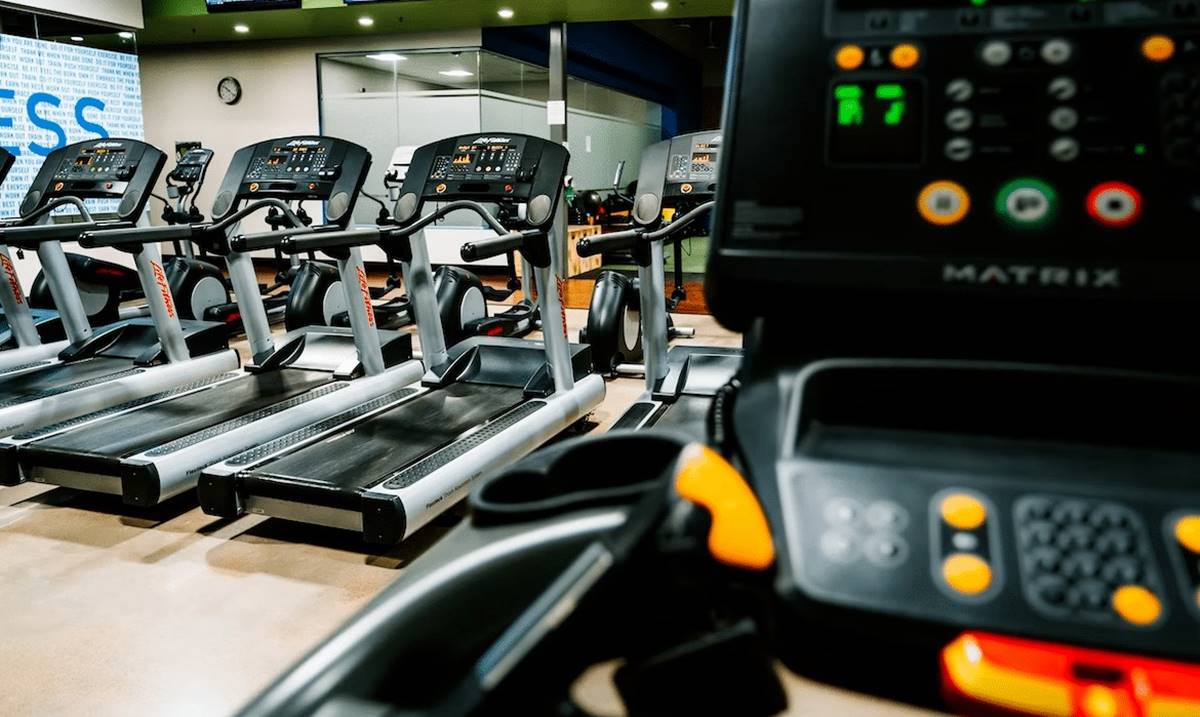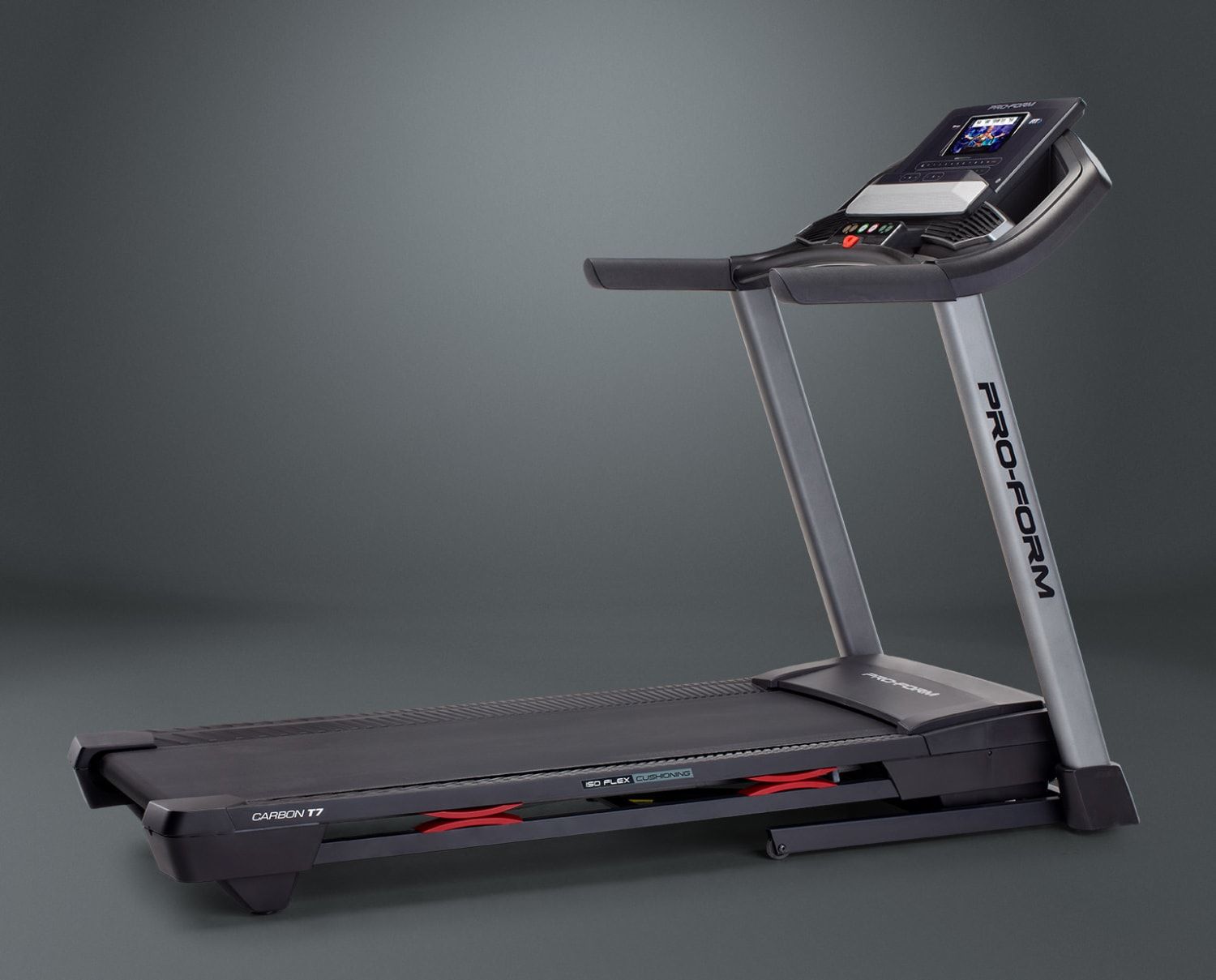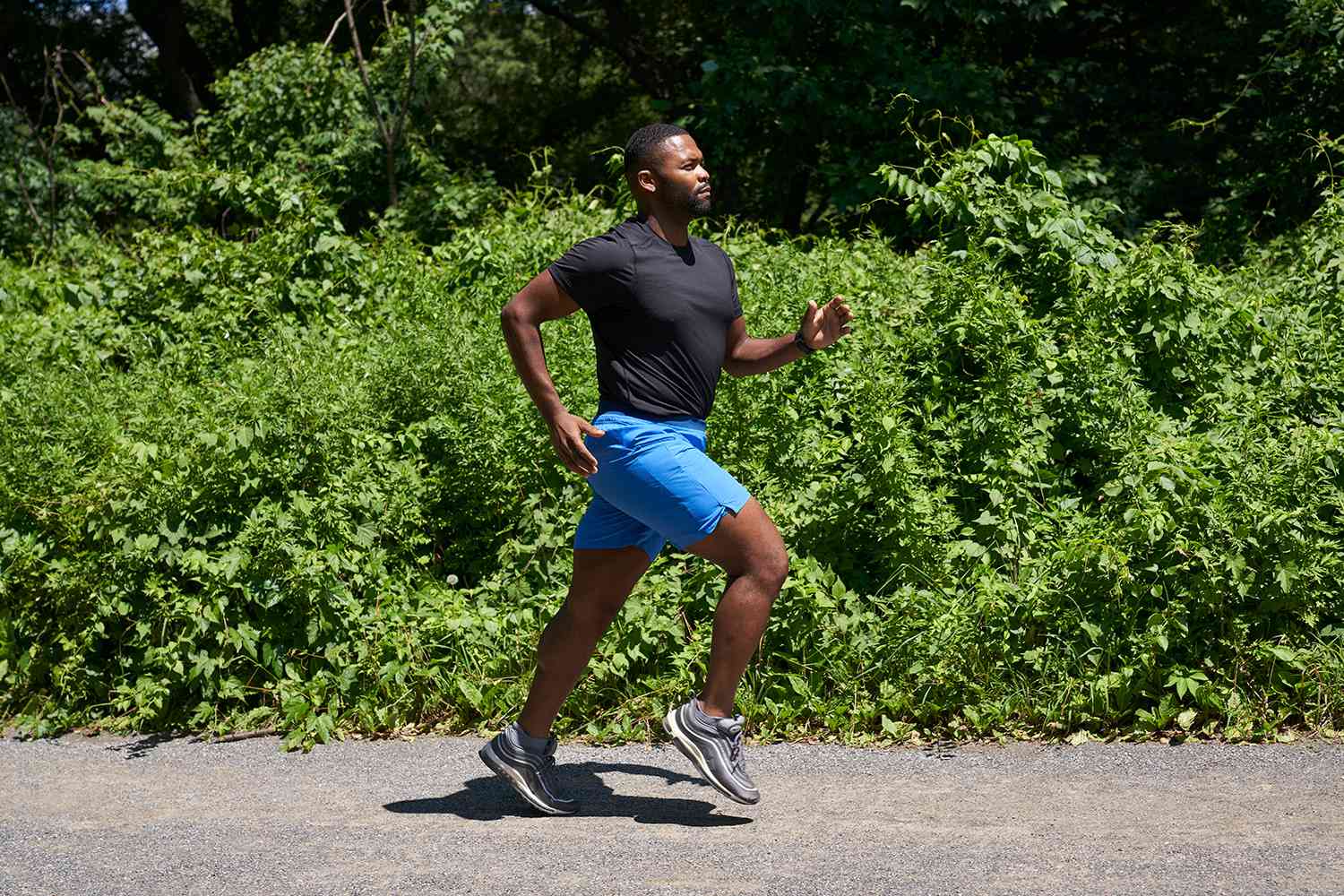

Featured
How To Have A Good Running Form
Modified: August 18, 2023
Improve your running performance with our featured guide on how to have a good running form. Master the essential techniques for optimal endurance and efficiency.
Introduction
Welcome to the world of running! Whether you are a seasoned athlete or just starting out, having a good running form is essential for maximizing performance, preventing injuries, and enjoying the sport to the fullest. Running with proper form not only improves your efficiency but also reduces the strain on your joints and muscles, allowing you to go the distance.
In this article, we will explore the importance of a good running form, discuss common mistakes runners make, and provide you with valuable tips and exercises to help you improve your running technique. So, lace up your shoes and get ready to take your running to the next level!
When it comes to running, form is everything. Your form dictates how efficiently you move and how much energy you expend. It affects your speed, endurance, and overall performance. By honing your running technique, you can unlock your full potential as a runner.
Running with proper form also plays a crucial role in injury prevention. When you run with incorrect form, you put unnecessary strain on your joints, muscles, and tendons, increasing the risk of injuries such as shin splints, knee pain, or Achilles tendinitis. By focusing on your form, you can minimize the impact on your body and reduce the likelihood of getting sidelined.
Now that you understand the significance of a good running form, let’s delve into some of the most common form mistakes that runners make. By identifying these errors, you can begin to correct them and improve your running efficiency. So, let’s get started!
Importance of a Good Running Form
Having a good running form is not just about looking graceful on the track or trail. It directly impacts your performance, efficiency, and overall experience as a runner. Here are some key reasons why a good running form is so important:
- Improved Efficiency: When you run with proper form, your body’s movements become more fluid and efficient. This means you can cover more distance with less effort. By minimizing wasted energy and optimizing your stride, you can maintain a steady pace and conserve energy for longer runs or races.
- Reduced Risk of Injury: Correct running form helps to distribute the impact of each foot strike evenly throughout your body, reducing the stress on your joints, muscles, and tendons. This can significantly lower the risk of developing common running-related injuries, such as shin splints, plantar fasciitis, or IT band syndrome.
- Better Muscle Engagement: When you have a good running form, you engage the right muscles at the right time. This means your glutes, hamstrings, and core work together in harmony, providing the necessary strength and stability to propel you forward. By activating the correct muscles, you can generate more power, improve your speed, and maintain a more upright posture.
- Enhanced Balance and Stability: A good running form includes maintaining proper balance and stability. This involves having a neutral spine, keeping your head aligned with your spine, and having a slight forward lean from the ankles. These factors help you maintain stability and prevent unnecessary swaying or veering off course.
- Better Breathing: Your running form influences your breathing pattern. By maintaining an upright posture and opening up your chest, you allow for better lung capacity and oxygen intake. This can improve your endurance and make your runs feel more effortless.
- Mental Focus and Mind-Body Connection: Paying attention to your running form requires mental focus and concentration. This can help take your mind off potential fatigue or discomfort, allowing you to stay in the present moment and connect with your body. This mind-body connection can enhance your overall running experience and help you perform at your best.
Now that you understand the importance of a good running form, let’s explore some of the common running form mistakes that you should avoid to improve your technique.
Common Running Form Mistakes
Even experienced runners can fall into the trap of poor running form habits. Let’s take a look at some of the most common running form mistakes to be aware of:
- Overstriding: This occurs when your foot lands too far out in front of your body, causing a braking effect and wasting energy. Aim for a midfoot strike, where your foot lands beneath your body, allowing for a more efficient push-off.
- Slouching or Rounded Shoulders: Running with a hunched or rounded upper body can restrict your breathing and lead to muscle imbalances. Maintain an upright posture and keep your shoulders relaxed and in line with your hips.
- Heel Striking: Landing on your heels with each stride can increase the impact on your body and lead to injuries. Strive for a midfoot or forefoot strike to distribute the impact more evenly and promote a smoother running motion.
- Weak Core: Neglecting core strength can cause excessive rotation and side-to-side movement while running. Develop a strong core through exercises such as planks and Russian twists to improve stability and maintain proper alignment.
- Overpronation or Supination: Both of these gait issues can lead to imbalances and injuries. Overpronation is characterized by excessive inward rolling of the foot, while supination is the outward rolling of the foot. Consult with a professional to determine if you need specific footwear or orthotics to address these issues.
- High Impact Arm Swing: Excessive swinging of the arms across the body can waste energy and cause tension in the shoulders. Aim for a relaxed arm swing, keeping your elbows at a 90-degree angle and swinging them back and forth in line with your body.
- Inefficient Cadence: Cadence refers to the number of steps you take per minute. Running with a low cadence can lead to overstriding and inefficient movement. Aim for a cadence of around 180 steps per minute and focus on shortening your stride.
Identifying and correcting these form mistakes can greatly improve your running efficiency and help prevent injuries. In the next section, we will share valuable tips to help you improve your running form and technique.
Tips to Improve Your Running Form
With a few adjustments and mindful practice, you can improve your running form and enhance your overall running experience. Here are some valuable tips to help you run with better form:
- Focus on Posture: Maintain an upright posture with your head aligned with your spine. Imagine a string pulling you upwards from the crown of your head. Avoid slouching or leaning too far forward or backward.
- Engage Your Core: Keep your core muscles activated throughout your run. This will provide stability and help maintain proper alignment. Imagine pulling your belly button towards your spine.
- Shorten Your Stride: Aim for a shorter stride that allows your foot to land closer to your body. This reduces the risk of overstriding and promotes a more efficient running motion.
- Land Midfoot: Focus on landing on your midfoot or forefoot, rather than your heels. This helps to distribute the force of impact more evenly throughout your body.
- Relax Your Shoulders and Arms: Keep your shoulders relaxed and avoid tensing up. Allow your arms to swing naturally back and forth, keeping them bent at a 90-degree angle.
- Work on Cadence: Aim for a higher cadence of around 180 steps per minute. Increase your turnover rate by taking shorter, quicker steps. This can help improve your running efficiency.
- Breathe Deeply and Relax: Focus on taking deep belly breaths while running. Relax your facial muscles and let go of any tension in your body. This will help you maintain a steady rhythm and avoid shallow breathing.
- Gradually Increase Mileage and Intensity: When working on your running form, gradually increase your mileage and intensity. Pushing too hard too soon can lead to fatigue and compromised form.
- Utilize Video Analysis or Running Apps: Consider using video analysis or running apps that provide real-time feedback on your running form. This can help you identify areas for improvement and track your progress over time.
By implementing these tips and being mindful of your running form, you can make considerable improvements to your technique. However, it’s important to remember that changing your form takes time and practice. Be patient with yourself and focus on gradual progress.
Strengthening Exercises for Better Form
In addition to focusing on your running technique, incorporating targeted strengthening exercises into your training routine can help improve your running form. By strengthening key muscles, you can enhance your stability, power, and overall running performance. Here are some exercises to consider:
- Core Exercises: A strong core is essential for maintaining proper posture and stability while running. Include exercises such as planks, Russian twists, and mountain climbers to target your abs, obliques, and lower back.
- Glute Strengthening: Strong glute muscles provide power and stability during running. Incorporate exercises like hip bridges, squats, and lunges to target your glutes and hip muscles.
- Calf Raises: Strong calf muscles play a crucial role in propulsion during running. Stand on the edge of a step or curb and raise onto your toes, then lower back down. Repeat for several sets to strengthen your calves.
- Single-Leg Balance Exercises: Balance is important for maintaining proper form and stability. Stand on one leg and try to maintain your balance for 30-60 seconds. Add challenge by closing your eyes or performing small movements like knee lifts.
- Hip Flexor Stretching: Tight hip flexors can lead to improper running form. Incorporate stretches like the kneeling hip flexor stretch and the standing quad stretch to target these muscles and improve flexibility.
- Strength Training: In addition to specific exercises, general strength training can benefit your running form. Include exercises like deadlifts, lunges, and squats to strengthen your lower body muscles.
- Yoga or Pilates: Practicing yoga or Pilates can improve balance, flexibility, and body awareness, all of which contribute to better running form. Include sessions that focus on core strength, hip mobility, and overall body alignment.
- Foot and Ankle Exercises: Strengthening your foot and ankle muscles can help improve stability and reduce the risk of injuries. Exercises like toe curls, toe scrunches, and ankle alphabets are great for targeting these areas.
- Massage and Foam Rolling: Regularly massage and use a foam roller to release tension in your muscles and fascia. This can help improve muscle flexibility and reduce the risk of muscle imbalances that affect your running form.
Remember to incorporate these exercises gradually into your training routine. Consult with a fitness professional or physical therapist to ensure you’re performing them correctly and safely.
By incorporating these strengthening exercises into your training routine, you can target key muscle groups and improve your running form, ultimately enhancing your overall performance and reducing the risk of injuries.
Conclusion
Congratulations on taking the initiative to improve your running form! By focusing on your technique and implementing the tips and exercises provided in this article, you are well on your way to becoming a more efficient and injury-resistant runner.
Remember, good running form is not achieved overnight. It takes time, practice, and patience to make lasting changes. Start by being mindful of your posture, foot strike, and stride length. Gradually incorporate the tips we discussed, such as engaging your core, relaxing your shoulders, and maintaining a shorter stride.
In addition to working on your form, don’t forget the importance of proper warm-up, cool-down, and adequate rest days. Take care of your body to prevent overuse injuries and give yourself time to recover and rebuild. Remember to listen to your body and adjust your training accordingly.
Lastly, keep challenging yourself and setting new goals. Whether you want to run longer distances, improve your speed, or participate in races, having a solid running form will contribute to your overall success as a runner.
Enjoy the journey of improving your running form and appreciate the positive impact it has on your running experience. Embrace the joy and freedom of running with efficiency and grace. Happy running!

